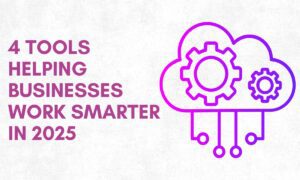A few years ago, I started noticing how what began as small discussions on public platforms influenced public sentiment around financial brands. They rarely looked alarming at first: just a few comments in social network, a handful of forwards in messengers. But within hours, the tone would start to change. Watching that pattern confirmed something I already knew from experience: reputation, especially in fintech, doesn’t collapse overnight; it just moves faster than manual processes can catch up with it.
That observation changed how I view my work and mission. For years, financial PR relied on relationships, press cycles, and instinct. But it became apparent that the environment itself had changed. Conversations were moving faster than Superman to the rescue, platforms were multiplying, and people could no longer follow everything manually. To keep up, communications had to evolve like ancient creatures and become technological, not just tactical.
I started exploring how to adapt tools and methods from other data-driven industries — or create new ones where nothing could be transferred directly — to build systems that could listen, interpret, and react in real time instead of hours or days later.
From intuition to infrastructure
Traditional PR teams are brilliant at storytelling, yet they’re not built for velocity. Information now spreads through layered ecosystems, from social networks to aggregator sites, and manual monitoring often misses the context.
In one case I worked on, a manager dismissed the initial buzz about a banking product in a messenger as routine chatter. By the next day, it had become a firing headline than needed much more attention than yesterday. That experience made one thing clear: financial PR doesn’t need more reports — it needs infrastructure that relies on technology and automatic alerts.
By infrastructure, I mean a way to measure sentiment, detect anomalies, and turn them into decisions before they become crises. Behind the scenes, this requires a proper data pipeline: real-time ingestion from social APIs, text normalisation, and anomaly detection layers based on models like ARIMA or Isolation Forest — statistical systems that analyse time-series data to spot irregular patterns.
These systems continuously learn what “normal” looks like for each brand and then raise alerts when something deviates from that baseline. This shift from reaction to prediction is deeply cultural: it requires PR to think in data loops, not press cycles. You get a chance to apply a patch where it’s needed most, and this process is guided by an emotionless piece of advice from a system whose judgment isn’t swayed by mood, weather, or relationships issues.
Turning data into foresight
In practice, predictive reputation systems track how sentiment, topics, and platforms move over time essentially creating a dynamic baseline of normal behaviour. When an unusual spike appears, the algorithm checks three things:
- duration (does it fade in two hours or persist for a day or more?),
- source diversity (does it stay within one channel or spread to news feeds and search results?),
- context (are we seeing words like “regulator,” “breach,” or “lawsuit”?).
Under the hood, sentiment detection often runs on FinBERT-based models fine-tuned for financial language — a neural network trained specifically to understand finance-related vocabulary and tone nuances. These models go beyond positive or negative tone, identifying aspect-level signals, for example, whether a discussion criticises product ethics, leadership, or innovation. The result is precision that makes the difference between a false alarm and a genuine early warning.
If the pattern holds, the system flags it as an event rather than a blip. In a nutshell, this helps a client intervene earlier — publishing context before speculation sets in. Instead of chasing headlines, teams have the option to guide the narrative with data-backed confidence. We needed a system that listens differently and acts earlier — and we’re building it ourselves.
Automation doesn’t replace judgment
I’m often asked whether this approach means replacing PR people with machines. It’s both yes and no. Automation in communications doesn’t remove human judgment — it eliminates bottlenecks. When routine monitoring and signal detection run automatically, people can focus on what they do best: interpreting, prioritising, and responding.
One of the most surprising outcomes for me was cultural. When teams see objective data on what audiences actually discuss, approval chains shorten. You don’t need five levels of sign-off to say the obvious. The PR-tech tool makes PR less hierarchical, more analytical and faster.
When reputation becomes measurable
Once reputation metrics appear on a dashboard next to marketing or sales KPIs, perception stops being a mystery. We can quantify improvement, benchmark accuracy, and calculate ROI. In my practice, I’ve seen accuracy levels above 90 percent on sentiment detection, an F1 score — a metric that balances precision and recall — of around 0.89, and false positives — cases where the system mistakenly flags harmless content as negative — under 10 percent. Reaction times shrink from days to minutes, and negative mentions fall by more than 80 percent within three months. Latency and event classification become as measurable as web traffic.
The most significant impact, though, isn’t in numbers but in confidence. Teams act earlier because they trust their data. When financial brands can see the link between sentiment trends and client behaviour (say, retention rates or fund outflows) they start treating reputation as a strategic asset, not a PR expense.
Technology for every scale
Until recently, such capabilities were reserved for large institutions with dedicated data teams. Today, modular cloud services make them accessible to smaller companies as well. Connecting social-media APIs, defining key entities, and receiving alerts via Slack or CRM can now be done in days, not months — with costs closer to a marketing-tool subscription than a research lab.
That accessibility matters. Reputation resilience shouldn’t depend on budget size. For smaller fintechs, these systems act as early-warning sensors, helping them manage trust proactively in a crowded market.
Trust deserves the same discipline
In finance, trust remains the most fragile and valuable asset. Our industry spends billions measuring risk on balance sheets, yet often overlooks reputational risk in the same breath. My belief is simple: communications deserve the same analytical discipline as trading desks or compliance teams.
The future of PR isn’t about press releases reacting to yesterday’s news. It should focus on systems that sense tomorrow’s tone and help humans respond with clarity rather than panic. Reputation moves faster than press cycles, and PR has to move with it.
About:
Vadim Skosyrev is a communications strategist and founder focused on innovation at the intersection of technology, PR, and finance.



































